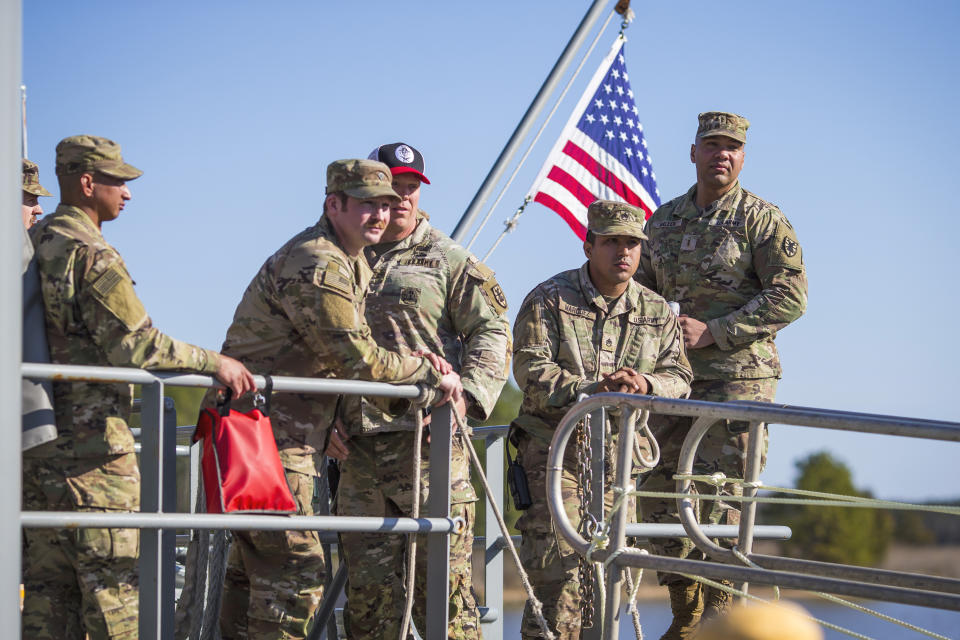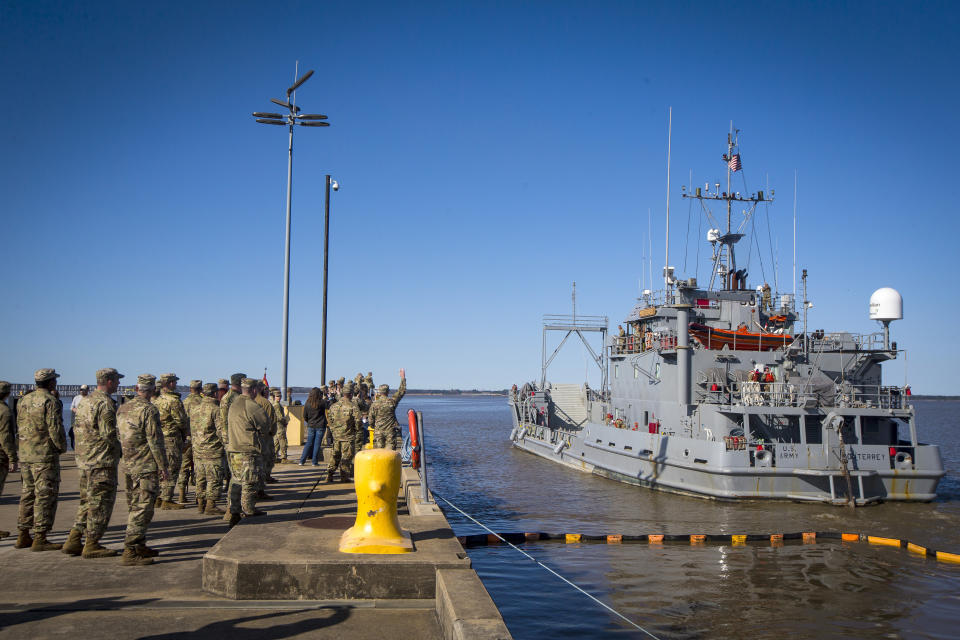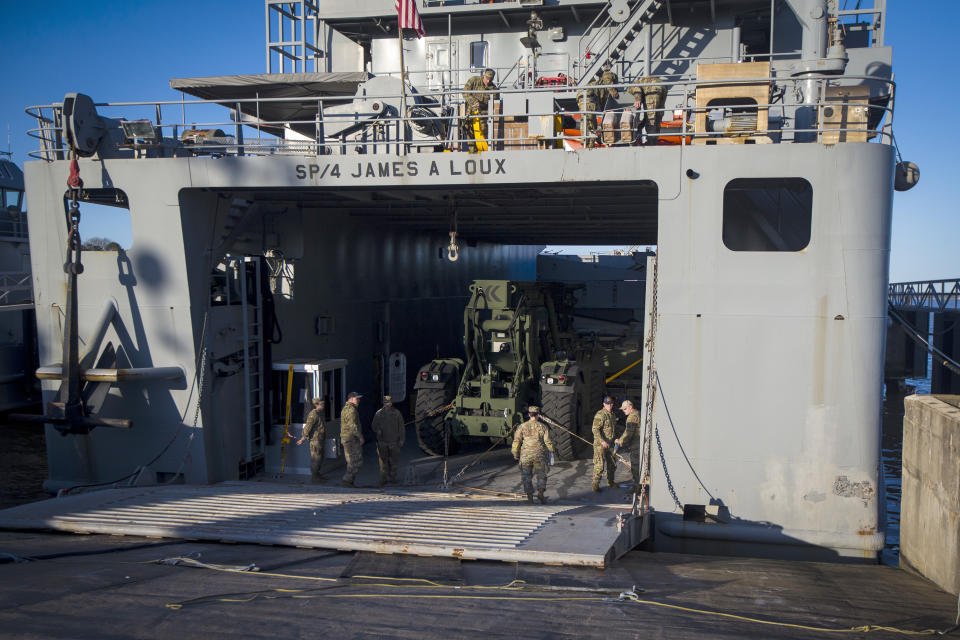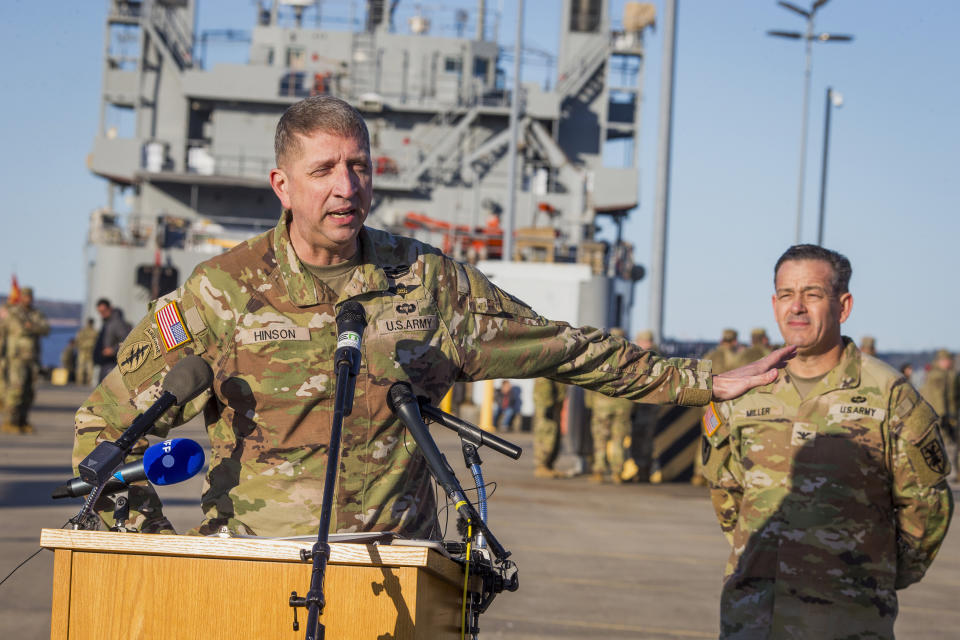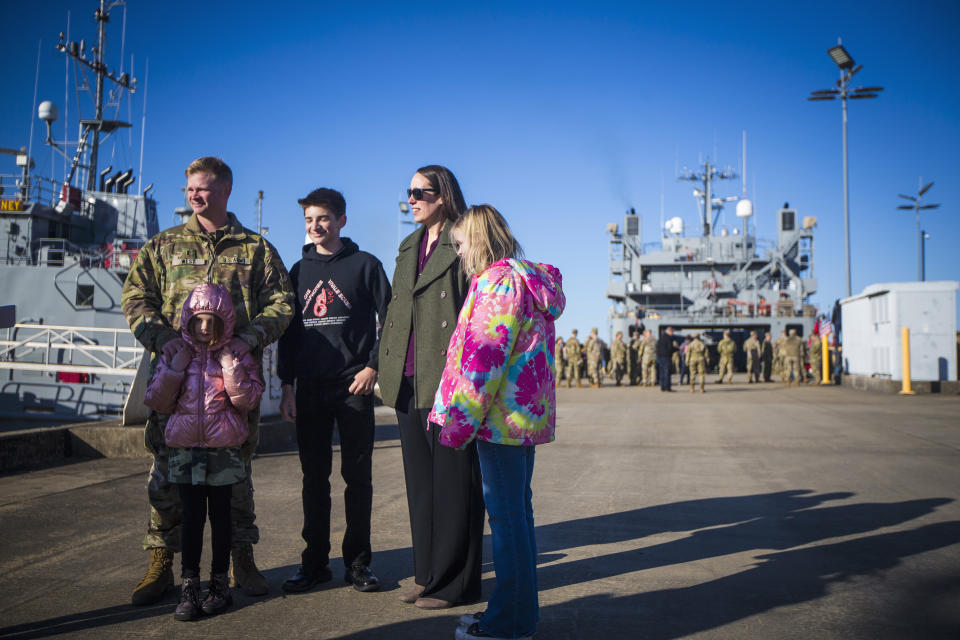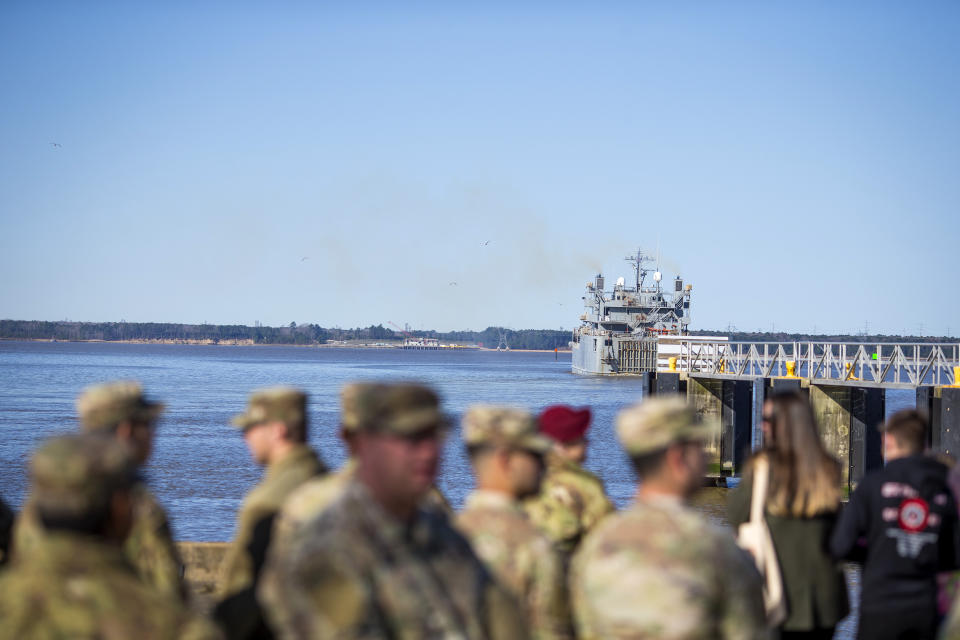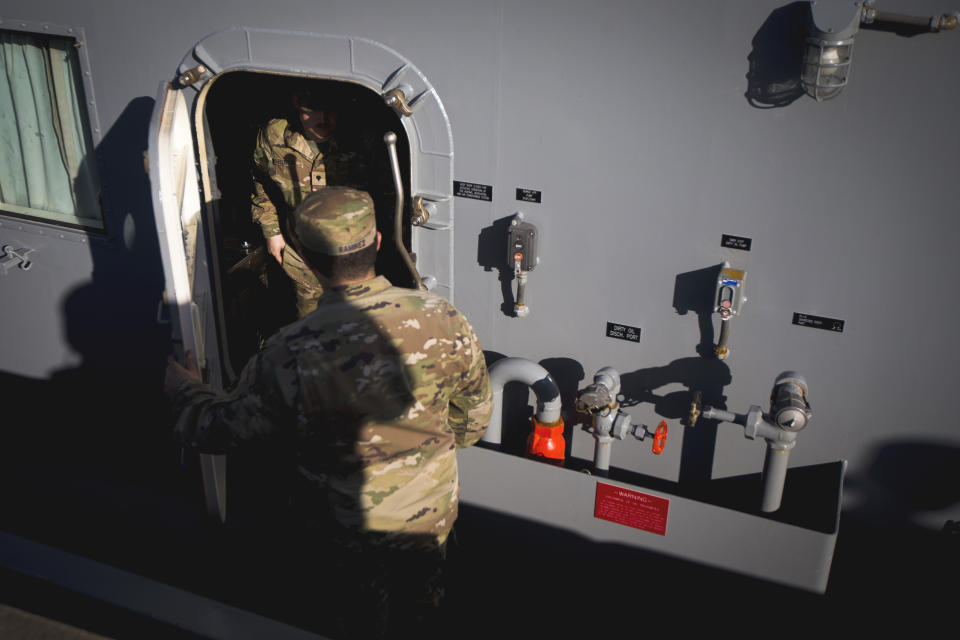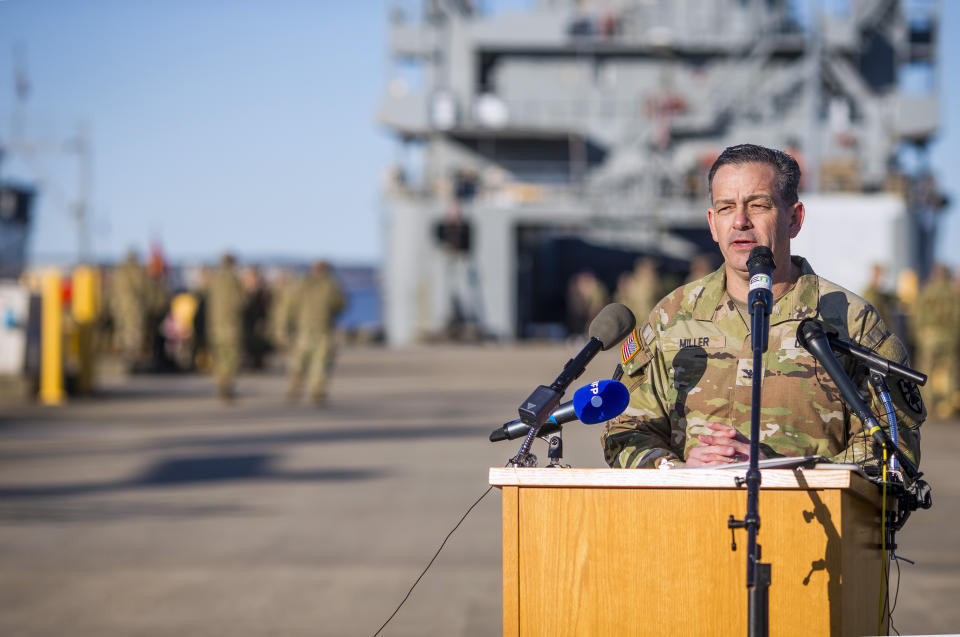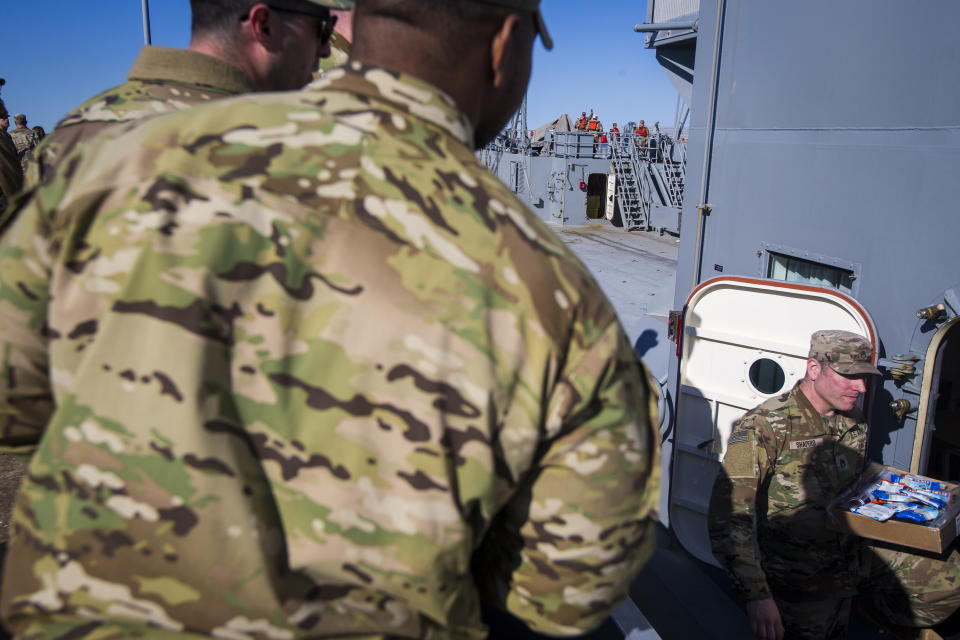US Army boats head out on a mission to build a floating pier off Gaza's shore for food deliveries
WASHINGTON (AP) — Four U.S. Army boats, loaded with tons of equipment and steel pier segments, left Virginia on Tuesday, heading to Gaza as part of the U.S. effort to expand the delivery of food and other supplies to starving Palestinians as Israel's war against Hamas drags on.
The ships pulled out of docks at Joint Base Langley-Eustis and headed down the James River toward the Atlantic Ocean for what could be a month-long voyage to the Mediterranean Sea. There, at a yet-to-be-announced location along the Gaza shore, they will build and begin to operate a floating dock to receive the aid.
Since Hamas militants attacked Israel on Oct. 7, Israel’s military has battered the territory, killing more than 30,000 Palestinians, according to the Gaza Health Ministry, and creating a humanitarian catastrophe. The U.N. says virtually all of Gaza’s 2.3 million people are struggling to find food. But getting humanitarian aid to the area has been difficult, due to the ongoing hostilities and struggles to coordinate with the Israeli military, which has blocked routes and slowed deliveries due to inspections.
The latest Pentagon plan calls for the U.S. military to build what is called a modular causeway system. Off shore, the Army will build a large floating platform where ships can unload large containers of aid. Then the aid will be transferred by the Army to a motorized string of steel causeway sections that have been pushed to the shore.
That pier is expected to be as much as 1,800 feet (550 meters) long, with two lanes, and the Pentagon has said it could accommodate the delivery of more than 2 million meals a day for Gaza residents. Officials have not said who will be unloading the containers and taking the aid ashore. President Joe Biden has said there will be no U.S. troops on the ground in Gaza.
On Tuesday, as family members and senior Army commanders watched, about 70 soldiers with the 7th Transportation Brigade (Expeditionary) pulled away from the docks in four U.S. Army vessels: the USAV Wilson Wharf, USAV Matamoros and USAV Monterrey, all Army landing crafts, and the larger USAV SP4 James A. Loux, a logistics support watercraft.
The brigade’s commander, Army Col. Sam Miller, said about 500 of his soldiers will participate in the mission. All together, Pentagon officials have said about 1,000 U.S. troops will be involved.
Calling it a complicated mission, Miller said the transit will take about a month, but it will depend on weather and any possible high seas. The actual construction, he said, will take about a week, but that also could be hampered by weather. Then it will take additional time to get the delivery process coordinated with those providing the aid and the system up and running. Defense officials have said it will take about two months to get the deliveries started.
The Army's vessels and maritime capabilities are unique and not as well known as the Navy's. The last time the 7th Transportation Brigade did a similar mission to construct a large pier was in Haiti in 2010. But it has participated in a number of major military exercises.
“The soldiers here are energized, they’re motivated, they’re excited,” Miller said, adding that the new humanitarian mission “gives them purpose and meaning” and highlights the Army's watercraft. He noted that just 36 hours after Biden ordered the operation, the first Army vessel — the USAV General Frank S. Besson logistics ship — left Joint Base Langley-Eustis on Saturday.
Miller said a larger Maritime Sealift Command ship will also be leaving Virginia in the coming days, and will be carrying some of the bigger equipment and more of the steel pier segments.

 Yahoo News
Yahoo News 